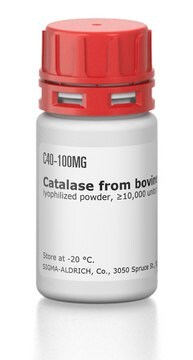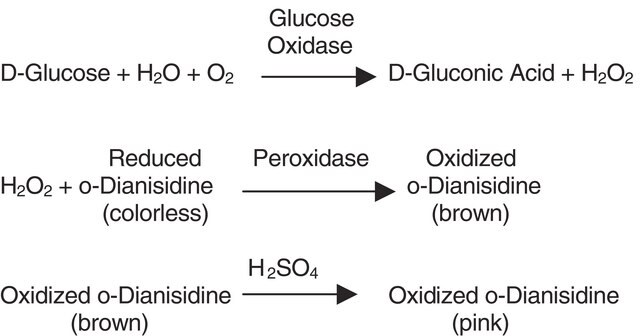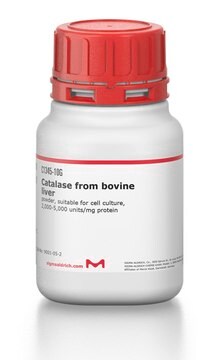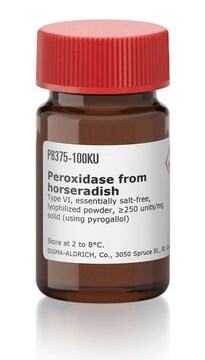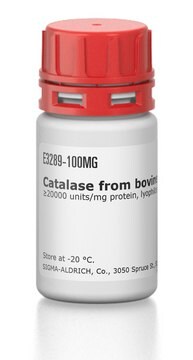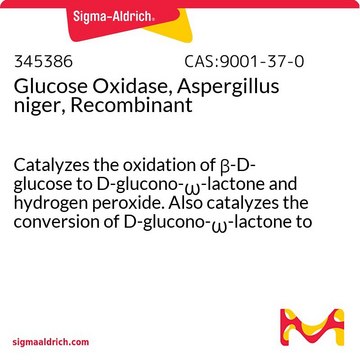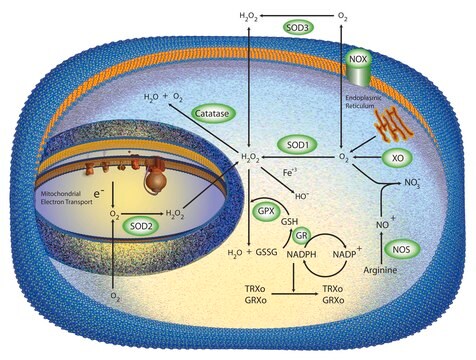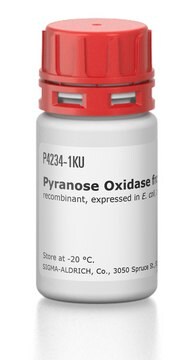C9322
Catalase from bovine liver
lyophilized powder, 2,000-5,000 units/mg protein
Sinônimo(s):
H2O2:H2O2 oxidoreductase
About This Item
Produtos recomendados
fonte biológica
bovine liver
Formulário
lyophilized powder
atividade específica
2,000-5,000 units/mg protein
peso molecular
tetramer ~250 kDa
ponto isoelétrico
5.4
nº de adesão UniProt
Condições de expedição
wet ice
temperatura de armazenamento
−20°C
cadeia de caracteres SMILES
O(CC)C(=O)c1ccc(cc1)O
InChI
1S/C9H10O3/c1-2-12-9(11)7-3-5-8(10)6-4-7/h3-6,10H,2H2,1H3
chave InChI
NUVBSKCKDOMJSU-UHFFFAOYSA-N
Informações sobre genes
cow ... CAT(280743)
Procurando produtos similares? Visita Guia de comparação de produtos
Descrição geral
Catalase from bovine liver is a tetramer consisting of 4 equal subunits each with a 60 kDa molecular weight. Each of these subunits contains iron bound to a protoheme IX group. The enzyme will also strongly bind to NADP, where NADP and the heme group are within 13.7 angstroms.
Aplicação
Catalase from bovine liver may be used:
- to prepare H2O2-O2 based biocathode for applications in glucose biofuel cells
- to study the kinetic properties and storage stability of catalase immobilized on to florisil
- in glutathione-mediated superoxide generation in an aqueous solution
Ações bioquímicas/fisiológicas
Atenção
Definição da unidade
Nota de preparo
The enzyme is soluble in 50 mM potassium phosphate buffer at 1 mg/mL and pH 7.0.
Armazenamento e estabilidade
Inibidor
Palavra indicadora
Danger
Frases de perigo
Declarações de precaução
Classificações de perigo
Resp. Sens. 1
Código de classe de armazenamento
11 - Combustible Solids
Classe de risco de água (WGK)
WGK 1
Ponto de fulgor (°F)
Not applicable
Ponto de fulgor (°C)
Not applicable
Equipamento de proteção individual
Eyeshields, Gloves, type N95 (US)
Escolha uma das versões mais recentes:
Já possui este produto?
Encontre a documentação dos produtos que você adquiriu recentemente na biblioteca de documentos.
Os clientes também visualizaram
Artigos
Oxidative stress is mediated, in part, by reactive oxygen species produced by multiple cellular processes and controlled by cellular antioxidant mechanisms such as enzymatic scavengers or antioxidant modulators. Free radicals, such as reactive oxygen species, cause cellular damage via cellular.
Nossa equipe de cientistas tem experiência em todas as áreas de pesquisa, incluindo Life Sciences, ciência de materiais, síntese química, cromatografia, química analítica e muitas outras.
Entre em contato com a assistência técnica